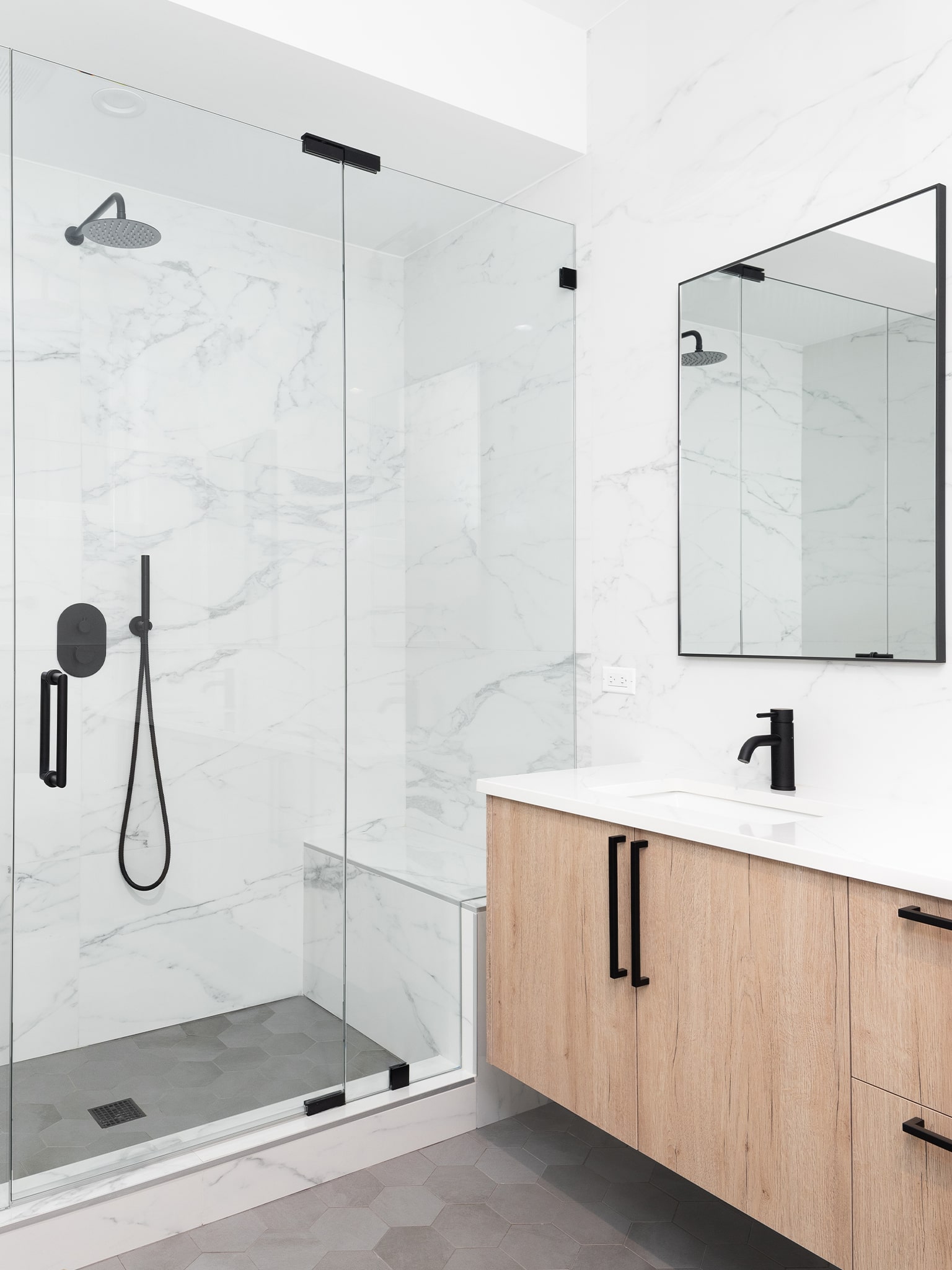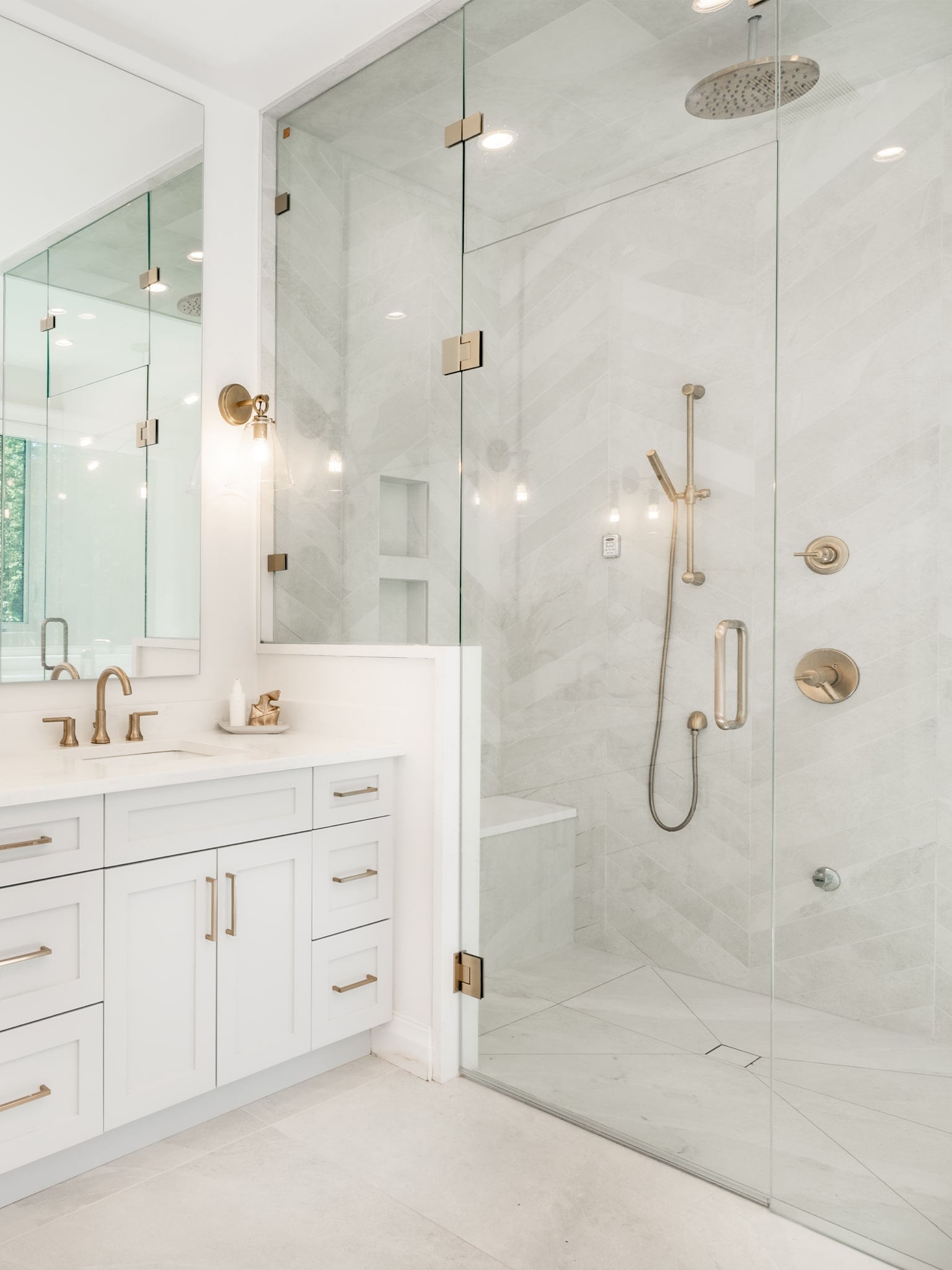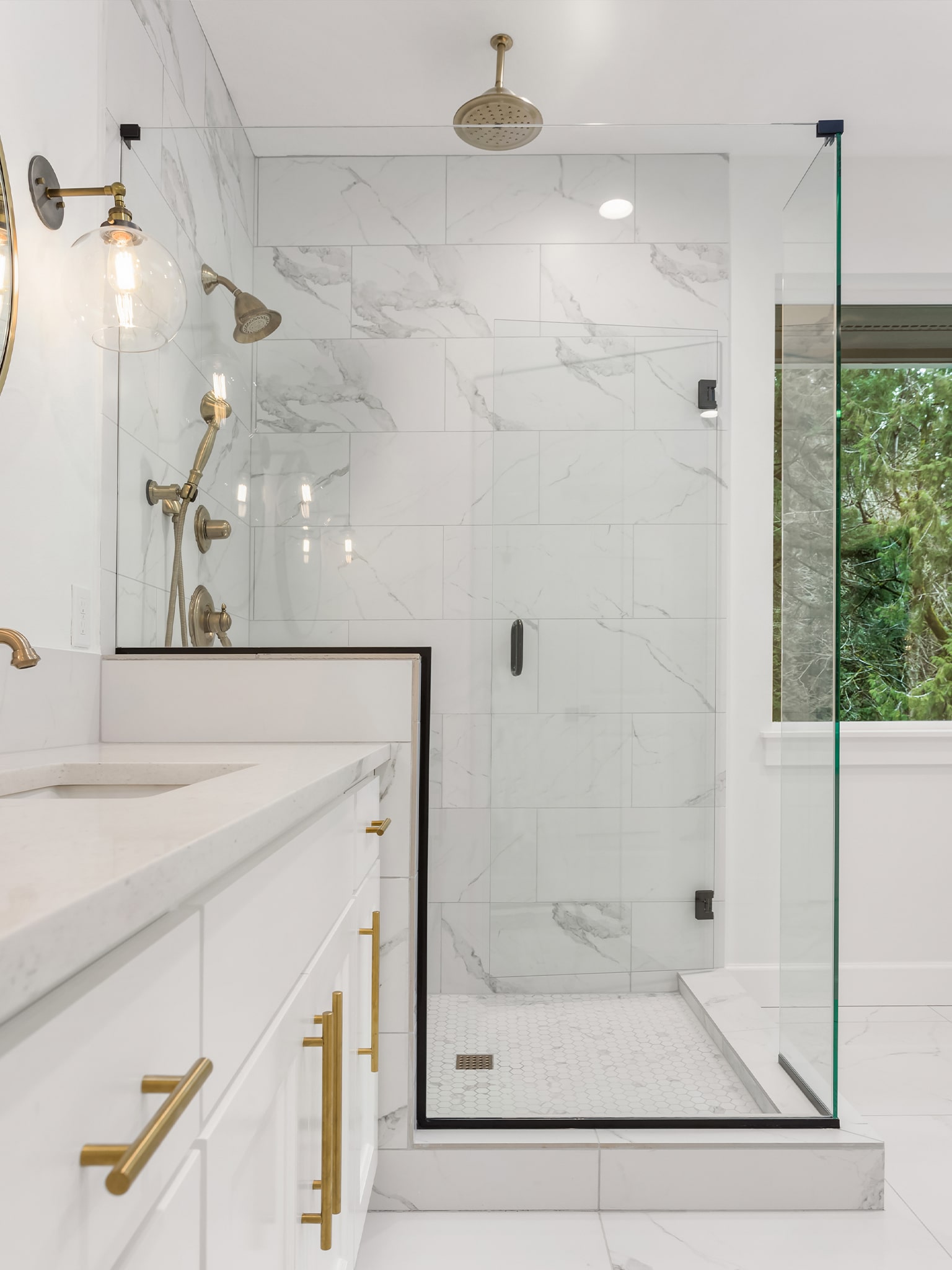Everything You Need to Know About Waterproofing for Showers
When it comes to shower installation, waterproofing is absolutely crucial. It’s the foundation of a long-lasting and functional shower that prevents water damage and mold growth. Here’s everything you need to know about waterproofing for showers:
Firstly, understand that water can seep through even the smallest cracks and gaps in your shower enclosure. That’s why proper waterproofing is essential to protect your walls, floors, and surrounding structures.
There are several methods of waterproofing showers, including waterproof membranes, waterproofing paints, and cement boards. Each has its own benefits and suitability depending on your specific shower design and materials.
Waterproof membranes, such as sheet membranes or liquid-applied membranes, are highly effective at creating a barrier against moisture. These membranes are applied directly to the substrate and provide a seamless and durable waterproofing solution.
Waterproofing paints are another option, typically applied as a liquid membrane over the surface of the substrate. While they can be effective, it’s important to choose a high-quality product specifically designed for wet areas like showers.
Cement boards are often used in conjunction with waterproof membranes to provide additional reinforcement and stability. These boards are resistant to moisture and provide a solid surface for tile installation.
Regardless of the method used, proper installation is key to ensuring effective waterproofing. This includes thorough surface preparation, precise application of waterproofing materials, and attention to detail around seams, corners, and penetrations.
It’s also important to consider the entire shower enclosure when waterproofing, including walls, floors, and joints. A comprehensive approach ensures complete protection against water damage.
Regular maintenance is essential to preserve the integrity of your waterproofing system. Inspect your shower regularly for any signs of damage or deterioration, and address any issues promptly to prevent further damage.
Order Shower waterproofing in Toronto
Protect your investment and ensure the longevity of your shower with professional waterproofing services in Toronto. We understand the importance of proper waterproofing to prevent water damage, mold, and costly repairs down the line. That’s why our expert team is here to provide reliable and effective waterproofing solutions for your shower.
Our experienced technicians utilize industry-leading materials and techniques to create a watertight barrier in your shower area. Whether you’re building a new shower or renovating an existing one, our comprehensive waterproofing services are tailored to meet your specific needs and requirements.
We start by thoroughly inspecting the shower area to identify any potential vulnerabilities or areas of concern. From there, we meticulously apply high-quality waterproofing membranes to ensure maximum protection against moisture infiltration. Our goal is to provide you with peace of mind knowing that your shower is shielded from water damage for years to come.
In addition to protecting your shower from leaks and water damage, proper waterproofing can also enhance the overall performance and longevity of your bathroom. By preventing moisture buildup, our waterproofing solutions help maintain a healthy and hygienic environment, reducing the risk of mold and mildew growth.
At every step of the process, we prioritize quality and attention to detail, ensuring that your waterproofing project is completed to the highest standards. We pride ourselves on our professionalism, reliability, and customer satisfaction, and we won’t rest until you’re completely thrilled with the results.
Don’t let water damage dampen your shower experience – invest in professional waterproofing services in Toronto today. Contact us to schedule a consultation and take the first step towards protecting your shower and preserving the beauty and integrity of your bathroom for years to come.
What is Shower Waterproofing & How Does it Work?
Waterproofing is needed to prevent moisture from entering and wetting the structure under the tile. That is why waterproofing for showers is done after pouring the screed, plastering the walls, and laying the tiles. In this case, both the screed and the plaster will be dry, and you will gain confidence that there will be no leaks and fungi under the tile for many years. We strongly recommend that you pay attention to this process. Waterproofing must be carried out in the “wet” zone, regardless of the materials of manufacture of both walls and pallets. And only quality materials.
The Benefits of Using Waterproofing Shower Cabin Installations
If you do not apply a waterproofing layer to the floor and walls, moisture may accumulate under the tiles; a consequence of this:
- wall fungus,
- constant humidity,
- bad smell,
- in some cases, water may flow to the floor below.
To eliminate this, you will need to dismantle the shower room, dismantle the tiles, and etch the fungus – that is, the global repair of the bathroom. And with all this – the floor outside and inside the shower cabin will be dry; such leaks are not immediately visible. Wet spots on the ceiling of neighbors may appear in a few years.
Different Types of Hydro-Insulating Materials and Their Uses
There are a lot of professional waterproofing mixtures. Mixtures differ in composition and application technology, but the general rules for the manufacture of waterproofing are the same. For waterproofing the shower area, it is optimal to use elastic coating waterproofing mixtures.
Waterproofing is applied in several steps. Sealant layers should be applied to the floor and always to the walls of the “wet” area. The height of the waterproofing layer on the wall is arbitrary. On the walls, as a rule, two layers of paste are applied on the floor – 3 layers. On the floor, the mixture is used first in one direction, the next layer – in a perpendicular direction. After the complete polymerization of all coatings of the waterproofing mass, a completely waterproof layer is formed, protecting against water penetration and ensuring the shower area’s safety and durability.


Tips for Proper Shower Wall Waterproofing
Here are the main tips from professional installer:
- you should know that in a shower room without a pallet, the floor level must be at least 10 cm lower than the floors throughout the apartment;
- to isolate the seams at the corners and the joints, it is necessary to use a sealant that has moisture-resistant properties or an elastic tape with the same properties;
- it is essential to take care of good ventilation in the room, which can make the humidity minimal;
- shower wall waterproofing materials must be applied not with chaotic movements, but even and parallel to one of the walls;
- if the shower tray is factory-made, it must be put in place and, at the junction with the wall, smeared with a moisture-resistant sealant; the remaining joints are sealed with rubber gaskets.
Features of Waterproofing Windows in Shower
When it comes to waterproofing windows in your shower, it’s essential to invest in features that provide both functionality and durability to ensure long-lasting protection against water damage and mold growth.
One key feature of waterproofing windows in the shower is using high-quality materials such as waterproof membranes or seals. These materials create a barrier between the window frame and the surrounding wall, preventing water from seeping through and causing damage. Look for products specifically designed for wet environments to ensure optimal performance.
Another important feature is proper installation techniques. It’s crucial to seal all seams, joints, and corners effectively to eliminate any potential entry points for water. Professional installation by experienced contractors can ensure that the waterproofing system is applied correctly and securely, minimizing the risk of leaks or moisture intrusion.
Additionally, consider incorporating features such as sloped sills or drip edges to direct water away from the window and prevent pooling or accumulation. These features help promote proper drainage and reduce the likelihood of water infiltration.
Furthermore, opt for windows with durable and water-resistant materials such as vinyl, fiberglass, or aluminum frames. These materials are less susceptible to water damage and corrosion, ensuring the longevity of your windows in wet environments.
It’s also beneficial to choose windows with proper ventilation options, such as operable vents or built-in exhaust fans. Adequate ventilation helps reduce humidity levels in the bathroom, preventing condensation and moisture buildup that can contribute to mold and mildew growth.
Finally, regular maintenance is essential to ensure the effectiveness of waterproofing features over time. Inspect windows periodically for signs of wear or damage, and reseal any areas that show signs of deterioration. By staying proactive with maintenance, you can prolong the lifespan of your waterproofing system and keep your shower area protected for years to come.
Investing in features such as high-quality materials, proper installation techniques, effective drainage systems, durable window frames, adequate ventilation, and regular maintenance is essential for waterproofing windows in the shower. By incorporating these features into your bathroom design, you can create a functional and water-resistant environment that enhances the longevity and integrity of your windows.
How much does a shower waterproofing cost, and how can you save money on it?
Determining the exact cost of shower waterproofing can be challenging as it depends on various factors such as the size of the shower, the type of materials used, and the extent of the waterproofing required. However, I can provide valuable insights into potential cost-saving strategies for your shower waterproofing project.
- Budget Planning: Begin by establishing a clear budget for the waterproofing process. Prioritize critical areas that require waterproofing to avoid overspending on unnecessary sections.
- Material Selection: Choose cost-effective yet high-quality waterproofing materials. Research and compare prices for waterproof membranes, sealants, and other products. Prioritize durability and effectiveness to ensure long-lasting protection.
- DIY vs. Professional Waterproofing: Evaluate the complexity of the waterproofing task. Simple tasks such as applying waterproofing paint might be suitable for a DIY approach, while more intricate work, like installing waterproof membranes, may require professional expertise. Balancing DIY and professional services can help manage costs.
- Preventative Measures: Address potential issues before waterproofing. Inspect the shower area for any existing leaks, cracks, or structural problems. Fixing these issues beforehand can prevent more extensive damage and additional costs in the future.
- Timing: Plan your waterproofing project during off-peak seasons when contractors may offer more competitive rates due to lower demand. Scheduling work during a dry season can also minimize the risk of weather-related delays.
- Routine Maintenance: Implement a routine maintenance schedule to prolong the lifespan of the waterproofing. Regularly inspect and address any issues promptly to prevent water damage, which can be more costly to repair.
- Localized Waterproofing: Focus on waterproofing the critical areas rather than the entire bathroom, especially if you are on a tight budget. Target areas prone to water exposure, such as around the shower enclosure and near plumbing fixtures.
- Sealant Selection: Choose the appropriate sealants for your shower. While some products may have a higher upfront cost, they could save you money in the long run by offering superior protection and durability.
By combining prudent budgeting, strategic decision-making, and a balanced approach between DIY and professional services, you can achieve effective shower waterproofing without breaking the bank. Always prioritize quality and adherence to industry standards to ensure the longevity of the waterproofing solution.
How to Order Shower Waterproofing in Toronto?
Turning to us, you will receive high-quality plumbing services. Our company is a local service, so the maintenance cost will be lowered. In addition, some services are guaranteed.
Superbreno is your partner in renovation and remodeling in Toronto!
Looking to ensure your shower stays beautiful and functional for years to come? Superbreno offers expert shower waterproofing services in Toronto to protect your investment and prevent water damage. Our skilled team specializes in providing high-quality waterproofing solutions that keep your shower walls, floors, and surrounding areas safe and dry.
At Superbreno, we understand the importance of proper waterproofing in maintaining the integrity of your bathroom. Moisture infiltration can lead to mold, mildew, and structural damage, compromising the longevity and appearance of your shower. That’s why we use advanced techniques and premium waterproofing materials to create a watertight seal that withstands daily use and keeps your shower looking like new.
Our experienced technicians meticulously prepare the surfaces of your shower to ensure optimal adhesion and coverage of the waterproofing membrane. We pay close attention to detail, addressing any potential trouble spots and ensuring complete protection against leaks and moisture penetration.
Whether you’re renovating an existing shower or building a new one, Superbreno is your trusted partner for shower waterproofing in Toronto. We take pride in our craftsmanship and attention to detail, delivering superior results that exceed our clients’ expectations.
Don’t take chances with water damage—trust Superbreno to provide reliable shower waterproofing solutions that stand the test of time. Contact us today to schedule a consultation and learn more about how we can protect your shower and enhance the beauty and functionality of your bathroom.
Consultation on shower waterproofing in Toronto
Looking for reliable shower waterproofing services in Toronto? Look no further! Our team specializes in providing expert consultation and seamless waterproofing solutions to ensure the longevity and durability of your shower.
In Toronto’s diverse climate, proper waterproofing is crucial to protect your shower and surrounding areas from water damage, mold, and mildew. With our years of experience serving clients across the city, we understand the unique challenges posed by Toronto’s weather conditions and building codes.
Our consultation process begins with a comprehensive assessment of your shower area. We meticulously inspect every detail to identify potential vulnerabilities and recommend the best waterproofing solutions tailored to your specific needs and budget.
We utilize industry-leading waterproofing materials and techniques to ensure maximum protection against water infiltration. Whether you’re renovating an existing shower or building a new one, we have the expertise to deliver results that stand the test of time.
Our team of skilled professionals is committed to delivering quality workmanship and attention to detail on every project. We work efficiently to minimize disruption to your daily routine while ensuring that your shower is properly waterproofed to provide years of worry-free use.
Customer satisfaction is our top priority, and we strive to exceed your expectations with every waterproofing project. Trust us to protect your investment and provide peace of mind knowing that your shower is safeguarded against water damage.
Don’t take chances with inferior waterproofing methods – contact us today to schedule your consultation and ensure the long-term integrity of your shower in Toronto. With our expertise and commitment to excellence, you can rest assured that your shower will remain watertight and functional for years to come.



